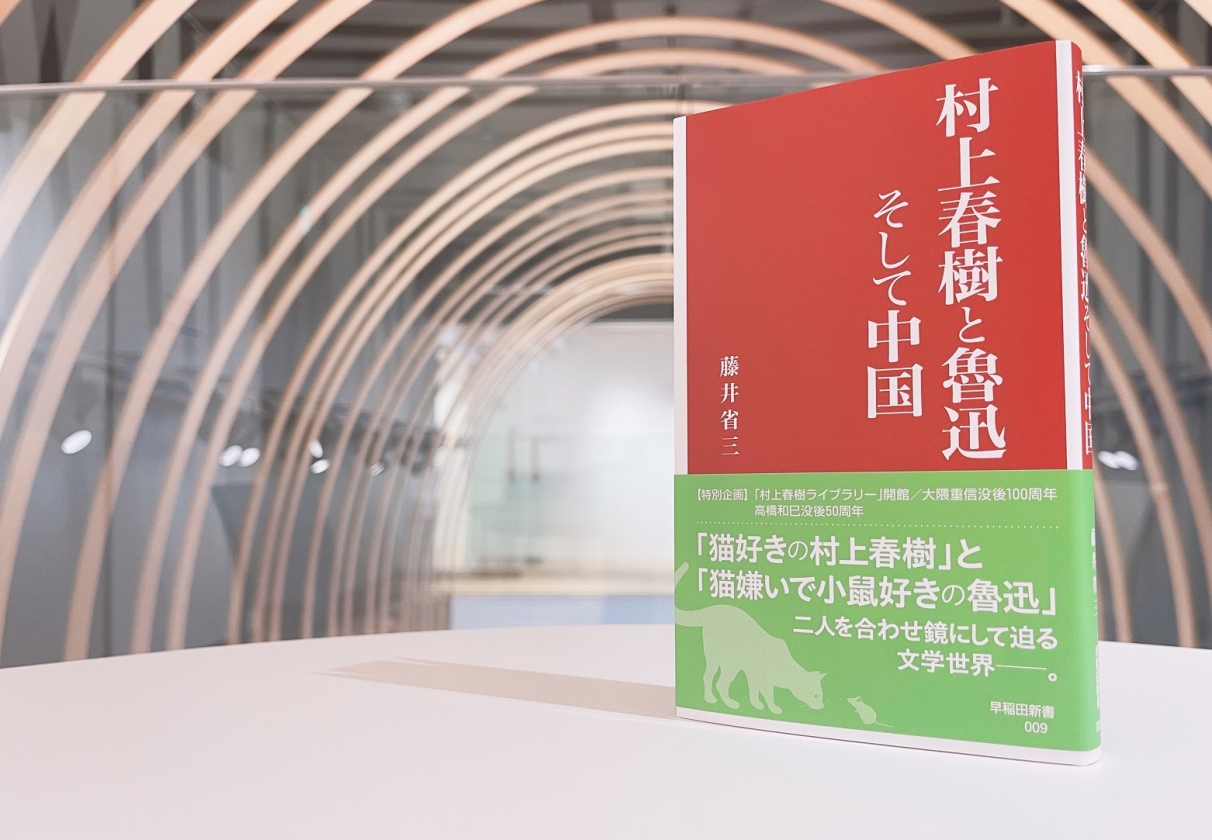

My Personal History with the Literature of Haruki Murakami
2022.02.25
- Shōzō Fujii
Happy New Year, everyone! We plan to continue bringing you more heart-and-soul-warming essays on the lasting impact of Murakami’s literature this year as well. Please join us on our journey!
January’s edition of the Encountering the Literature of Haruki Murakami series is an essay by Tokyo University Professor Emeritus Shōzō Fujii. A scholar of Chinese literature, Professor Fujii is one of the world’s pre-eminent experts on Lu Xun, while also being known in the Chinese-speaking world as one of the foremost experts on the literature of Haruki Murakami.
I first read Professor Fujii’s work in 2008. I was greatly impressed by Haruki Murakami’s China, a book that examines “China” as a signifier within Murakami’s literature while also tracing the history of his literature’s reception in the Sinosphere. This led to the opportunity for us to meet, as I sent him an email expressing my great hope to study Haruki Murakami’s literature in the context of East Asia under his supervision, even going so far as to send along my research plan. A few days later, I received a lovely message of encouragement from him in the mail, along with a copy of my research plan, which he had gone to the trouble of correcting and marking up by hand, using a red pen! I couldn’t help but think of the man described in “Mr. Fujino,” the famous essay by Lu Xun, the Father of Chinese Literature. From that point on, I became Professor Fujii’s official student, and I’ve benefited from his careful guidance for over ten years now.
I will end this introduction by quoting a section of “Mr. Fujino,” which itself was translated into Japanese by Professor Fujii. It reflects my feelings about Professor Fujii exactly—just substitute “literature” for “medical science” and “knowledge” in the quotation.
Of all those whom I consider as my teachers, he is the one to whom I feel the most grateful and who gave me the most encouragement. And I often think: the keen faith he had in me and his indefatigable help were in a limited sense for China, for he wanted China to have modern medical science; but in a larger sense, they were for science, for he wanted modern medical knowledge to spread to China. In my eyes he is a great man, and I feel this in my heart.
English translation: “Mr. Fujino”, in Selected Works of Lu Hsun Volume One,
Yang Xianyi and Gladys Yang, trans. (Peking: Foreign Languages Press, 1956), 409.
Quan Hui (Editorial Director, Waseda International House of Literature)
My Personal History with the Literature of Haruki Murakami
Shōzō Fujii
1. On Reading Sheep, and Starting to Read Wind
The first thing I ever read by Haruki Murakami was a hardcover copy of Hear the Wind Sing. I think it must have been not long after it was published in 1979. I chalk it up to my youth at the time that I was unable to detect the idiosyncratic attitudes toward China running beneath the novel’s surface. Indeed, I remember being unable to stick with that meandering first-person narration, which led to me, as a short-tempered person by nature, throwing it aside without finishing it.
A few years after that, I had a son; we named him Haruki. I remember my friends asking if he was named after Murakami, and I remember answering no—my son had been born in the spring, and I had wanted to use the character haru, meaning spring, in his name, and that was all there was to it.
A few years after that, in December of 1985, I had a terrible pain in my stomach and went to the internal medicine department in a hospital attached to a certain medical school, only to be told it was simply “stomach pain.” After two or three more days of suffering as the pain continued to worsen, I ended up being taken by ambulance back to the same hospital on New Year’s eve; this time, though, I was brought to a specialist in gastroenterology. After cutting me open from my solar plexus to the pit of my stomach with an incision of thirty centimeters, it was determined that my appendix had burst, causing acute peritonitis. I was told that the shadow of death had appeared on my face, and had I waited even half a day longer for treatment, I would have no longer been in this world. My wife asserted that this was due to the misdiagnosis on the part of the initial general practitioner we’d visited, but she was admonished to the effect that it had been our mistake to go to the internal medicine department first, instead of straight to the gastroenterology division of the surgical medicine department. I wondered how many patients suffering from stomach pains would go directly to the surgical medicine department, but nonetheless found myself impressed by this lesson in the magical realist world of modern Western medical science.
I spent a month in the hospital after my surgery, and during that time, I was visited by my friend Mamoru Yamaguchi, who brought me a copy of A Wild Sheep Chase. He praised it greatly, saying that he thought I might find it interesting as well. The two-volume paperback edition he lent me came out from Kodansha in October of 1985, so he must have given it to me not long after it went on sale. Perhaps my time spent on the brink of death soothed my native shortness of temper, because this time Murakami’s style filled me not with impatience, but with nostalgia. Further, part of the narrative takes place in Manchuria, and I quickly became absorbed in the book as I continued to read. After my hospitalization ended, though, both my public and private lives became quite busy, as I left my private university to start teaching at Tokyo University and my third child was born, and I ended up drifting away from Murakami’s literature once again.
2. Meeting Murakami Again, in Taiwan and Hong Kong
My third encounter with Murakami’s literature took place in August of 1997, during my one month stay in Taipei as a Japan-Taiwan Exchange Association Visiting Scholar. The moment I arrived at my apartment on Jinan Road, I dropped off my luggage and headed straight for Eslite Bookstore, located at the roundabout where Ren’ai and Dunhua South Roads intersected. This was the hippest bookstore in all of East Asia at the time.
I stepped through the entrance brimming with anticipation, thinking, Now, to discover the newest trends in Chinese-language culture, only to see the huge flat case devoted to new publications taken up by a “Haruki Murakami Book Fair”! The highly refined new translation of Norwegian Wood by Lai Ming-chu had come out that year in June from China Times, and they had acquired the rights to thirteen Murakami books by then, from Norwegian Wood to Hardboiled Wonderland and the End of the World. Further, this new translation of Norwegian Wood had touched off another “Murakami Boom” in Taiwan. I’d neglected to notice the previous Murakami Booms that had occurred throughout the Chinese-speaking world up until then, and so I found myself standing dumbfounded before this mountain of Taiwanese Murakami editions towering before me.
Later, when I returned to my home in Tokyo, I found my oldest daughter and son, who at the time were in their third and first years of high school, respectively, quarreling with each other over the three just-released paperback volumes of The Wind-Up Bird Chronicle from each other out of eagerness to read it. I found myself joining in, saying, Why don’t you let your dad get a chance to read it….? Not to take up too much space talking about private matters, but starting from when they enter middle school, children begin rebelling against their parents, which often leads to parent-child conflicts in the home. So it was a lovely thing that Murakami’s literature provided something in common for me to talk about with my children during this contentious time. I was struck anew by Murakami’s literature and its power to transcend not only national borders, but generational divides as well.
The next year, during a monthlong stay at University of Hong Kong to conduct research into Hong Kong cultural identity, I consciously looked around for signs of the impact of Murakami’s literature there; this was around the time Boyi put out a collection of Murakami’s works translated by Ye Hui. By coincidence, I was lucky enough to see a comic movie (Tricky King) in the theater that used a copy of Norwegian Wood as a prop. When I returned to Japan, I wrote a one-page column that appeared in the December 1998 issue of the journal Subaru, titled “From ‘The Haruki Murakami Phenomenon’ to ‘Japanese Home Drama’.” I believe this is the first thing I ever published on the subject of Murakami.
1998 also saw the sudden eruption of a Murakami Boom in Shanghai as well, and in the afterword for my book Exploring Contemporary Chinese Culture: A Tale of Four Cities, which came out the next year, I mentioned the recent emergence of the phrase 非常村上 in Taiwan—meaning that something is “so Murakami.” It was around this time that I began to see Haruki Murakami as a mirror I could use to think about comparative East Asian cultural studies.
3. Toward Joint International Research
Subsequently, I began to publish articles and essays on the subject. They include:
150 Years of Japan-China Relations, Part One: From Shinsaku Takasugi and Natsume Sōseki to Haruki Murakami (NHK Radio, Chinese Language Program: April 2001 Edition),
“Haruki Murakami’s China,” in Tōhō (Tōhō Shoten, October 2003),
The ‘Haruki Murakami Phenomenon’ in East Asia,” Hokkoku Shinbun and other news papers distributed by Kyodo News Service (December 16, 2004), ,
“Lu Xun, Haruki Murakami, and the Construction of ‘East Asian Literary History’,” in Ajia Yūgaku (Bensei Publishing House: February 2005), and
“Literature in the Post-Deng Xiaoping Era: From ‘Absolute Murakami’ to ‘Anti-Japaneseness’,” in Subaru (August 2005).
Besides these written pieces, I also gave many talks. These include:
“Haruki Murakami and East Asia: Literature as a Symbol of Urbanization,” at the International Symposium on New Research on China in the 21st Century at the University of Hong Kong (January 2001),
“Haruki Murakami’s China,” at the Symposium Commemorating the 50th Anniversary of the Founding of People’s China (July 2003), and
“Haruki Murakami in China, Hong Kong, and Taiwan,” at the Second Annual International Conference of Asian Scholars of Chinese Literature (Hankuk University of Foreign Studies, November 2004).
Besides these academic talks, I also appeared on the NHK show Viewpoint/Counterpoint (Shiten Ronten) to talk about “Haruki Murakami in East Asia” in March of 2001.
In 2005, I received a four-year fellowship from the JSPS to create a joint research project on “Haruki Murakami in the Context of 20th Century East Asian Literary History,” involving fellow scholars from Korea, Mainland China, Hong Kong, Taiwan, Singapore, Malaysia, the U.S.A., and Japan. The main result of this joint research project was the international symposium Haruki Murakami and East Asia, held in November of 2008 at the Sanjō Kaikan at Tokyo University, and the subsequent monograph collecting essays from the symposium, East Asia Reads Haruki Murakami (Tokyo: Wakakusa Shobō, 2009).
The symposium was also very memorable for gathering together the three greatest translators of Murakami into Chinese: Ye Hui, who, besides being a translator of Murakami for Hong Kong readers, is also a fellow researcher into the topic; Professor Lin Shaohua, who translates Murakami for Mainland readers; and Lai Ming-chu from Taiwan.

Group Photo from the International Symposium Haruki Murakami and East Asia (November 1, 2008), Sanjō Kaikan, Tokyo University. Pictured (Left to Right): Myoung-shin Im (Korea), Kwan Sze-pui Uganda (Hong Kong), Shōzō Fujii, Yang Bingjing (PRC), Yu Guiling (PRC), Xie Huizhen (Taiwan), Teru Shimamura (Japan), Chang Mingmin (Taiwan), Lin Shaohua (PRC), Ye Hui (Malaysia), Yang-su Kim (South Korea), Gabriel Wu (Singapore), Lai Ming-chu (Taiwan), Xu Jinlong (PRC)
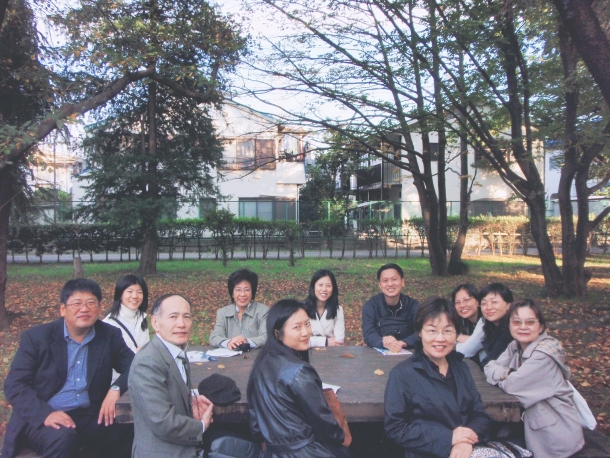
A Haruki Murakami Reading by the International Symposium Haruki Murakami and East Asia Reporter, Faye Kleeman (U.S.A.). Photo taken at ICU, November 2, 2008

Post-Workshop Reception at Dug Jazz Cafe & Bar, Shinjuku
4. After Haruki Murakami’s China
n 2007, based on my research on the literature of Haruki Murakami in the prior ten years, I wrote and published the book Haruki Murakami’s China (Asahi Shinbun-sha, 2007). In the book, I attempt to use China to analyze Murakami’s literature and use Murakami’s literature to analyze contemporary Chinese culture and society. The first chapter examines the influence of Lu Xun (1881-1936) on Murakami, as well as Murakami’s relationship to the historical memory of the Sino-Japanese War; the second through fourth chapters look at Murakami’s reception in the three main centers of Chinese-language culture over the course of twenty years, examining “The Haruki Murakami of Taiwan, Hong Kong, and China” by looking at the respective publication histories of literature in translation and the responses of critics and regular readers alike to Murakami’s work in those venues. In the fifth chapter, “The Forest of Flourishing Translation,” I look at the cultural background underlying the translation of Murakami into Chinese in these three cultural centers. The sixth chapter constructs a cultural history of contemporary East Asia through tracing the history of the “Ah Q” figure as found in literature from Lu Xun through Haruki Murakami, as well as in the films of Hong Kong director Wong Kar Wai.
The discussion of Murakami’s reception in Mainland China, Hong Kong, and Taiwan that makes up the latter half of the book was generally well-received, but the first half, which asserts that Murakami was influenced by Lu Xun and the historical memory of the Sino-Japanese War, was rejected by some in Japan, who thought that someone as Americanized as Murakami could not possibly be so tied to China. But the support the book received in the Chinese-speaking world was strong and steady. Right after Haruki Murakami’s China came out, I was contacted by publishers from both Taiwan and the Mainland to put out translations in both traditional and simplified Mandarin; in Taiwan, a translation by my colleague Doctor Chang Mingmin came out under that title 村上春樹心底的中国, while the translation into simplified Chinese for Mainland readers never ended up seeing the light of day. When discussing Murakami’s deep interest in China, I referred frequently to his essays on the Tiananmen Square Incident, contrasting reactions to him in Taiwan where the democratization movement succeeded in the late 1980s and in Mainland China where the similar movement failed, as well as posing a “post-democratization movement rule” in the reception of Murakami’s literature; perhaps this prevented the book from being published on the Mainland. Nonetheless, I’ve given more than thirty talks at universities and conferences in the Mainland on topics such as “Lu Xun and Haruki Murakami” and “Haruki Murakami and China.”
I’ve given such talks not just in China, but also at Ewha Women’s University in South Korea, Queensland University in Australia, University of Colorado in the U.S., among other venues. The relations between Haruki Murakami or Natsume Sōseki and Lu Xun is a topic that attracts fans of those authors from all over the world, it seems.
I said that the Mainland Chinese translation of Haruki Murakami’s China never saw the light of day, but there are many researchers from the Mainland who read the book and became inspired to pursue their own studies of Murakami, and who then came to study at the Chinese literature department at Tokyo University. Among these students is Doctor Quan Hui, Assistant Professor here at the Waseda International House of Literature, and Doctor Xu Ziyi, who teaches at Tokyo University of Science; both are among the brightest of the Murakami literature scholars working in East Asia today.
As for my own work, I was able to publish the results of new research I conducted during the ten years since Haruki Murakami’s China in a new book, Haruki Murakami, Lu Xun, and China (Waseda Shinsho), which was published by the Waseda University Press last year in December
5. My Hopes for the Haruki Murakami Library
In 2005, the Japan Foundation helped plan another international symposium on Murakami, titled A Wild Haruki Chase: How Does the World Read Haruki Murakami?. The symposium was organized by American literature scholar Motoyuki Shibata, Slavic literature scholar and critic Mitsuyoshi Numano, film and cultural critic Inuhiko Yomota, and myself; we gathered together twenty-three Murakami translators from seventeen countries all over the world for a conference that lasted two days at Tokyo University. There were separate sessions also held at Hokkaidō University and in Kobe, and the result was the publication of the book A Wild Haruki Chase: How Does the World Read Haruki Murakami? from the publisher Bungei Shunju (which subsequently came out in paperback).
Over the past six years, even in just the Chinese-speaking world, we’ve seen the emergence of a wonderful new translator of Murakami in the person of Professor Shi Xiaowei, as well as new books analyzing Murakami’s literature from professors Yang Binjing, Shang Yiou, and Chang Mingmin. New developments are always occurring in the reception of Murakami in places all over the world.
I am certain that people all over the world have various hopes and expectations for this new Haruki Murakami Library. My own wish is that the Library will take the lead to hold another major international symposium on Murakami’s literature in the near future.
Februry 25, 2022

Profile
Shōzō Fujii was born in Tokyo in 1952, and is a scholar of modern Chinese literature with a focus on Sinophone literature and film. He is Professor and Head Librarian at the Nagoya University of Foreign Studies, and Professor Emeritus at Tokyo University. He graduated with a degree from the Literature Department at Tokyo University in March of 1976, and after completing the graduate program there in Chinese literary studies, he became an exchange student at Fudan University on a Chinese Government Scholarship, returning to Japan to complete his program at Tokyo University in March of 1982. He received his doctorate in literature from Tokyo University in September of 1991.
His publications include Haruki Murakami’s China (Asahi Shinbunsha), The History of Sinophone Literature (Tokyo University Press), Lu Xun and Japanese Literature (Tokyo University Press), Lu Xun and World Literature (Tōhō Shoten), Haruki Murakami, Lu Xun, and China (Waseda University Press), among others.
Related
-
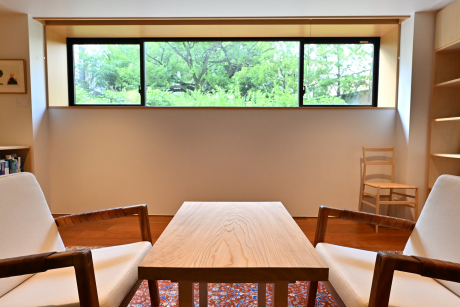
“Letters from the Haruki Murakami Library”― Rebecca Brown
2025.12.02
-

“Letters from the Haruki Murakami Library”― Camilla Grudova
2025.10.20
-
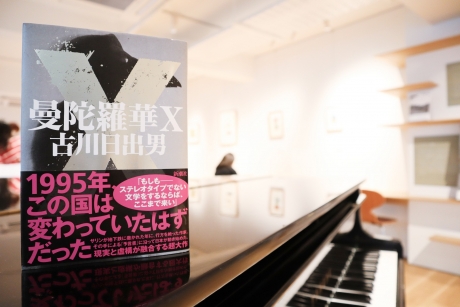
Memories of Things That Never Happened to You
2022.12.12
- Hideo Furukawa
-
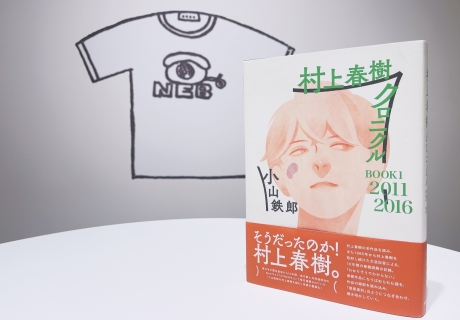
Historical Consciousness and “Boomerang” Thoughts in the Works of Haruki Murakami
2022.05.08
- Tetsurō Koyama
-
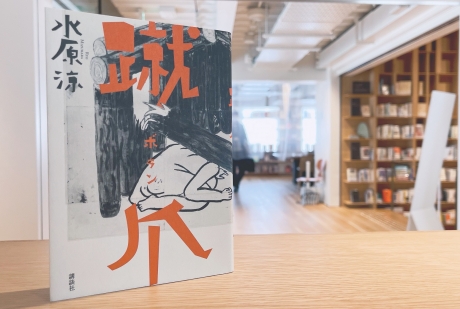
Useful Landscape
2022.03.28
- Ryō Mizuhara
-
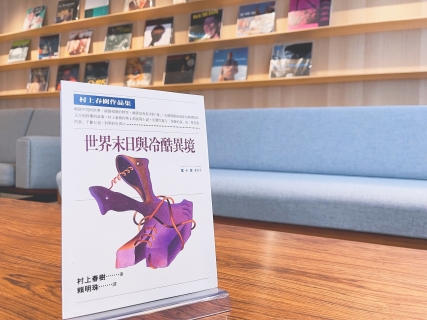
My Encounter with Haruki Murakami, and Taiwan’s
2022.01.27
- Lai Ming-chu
